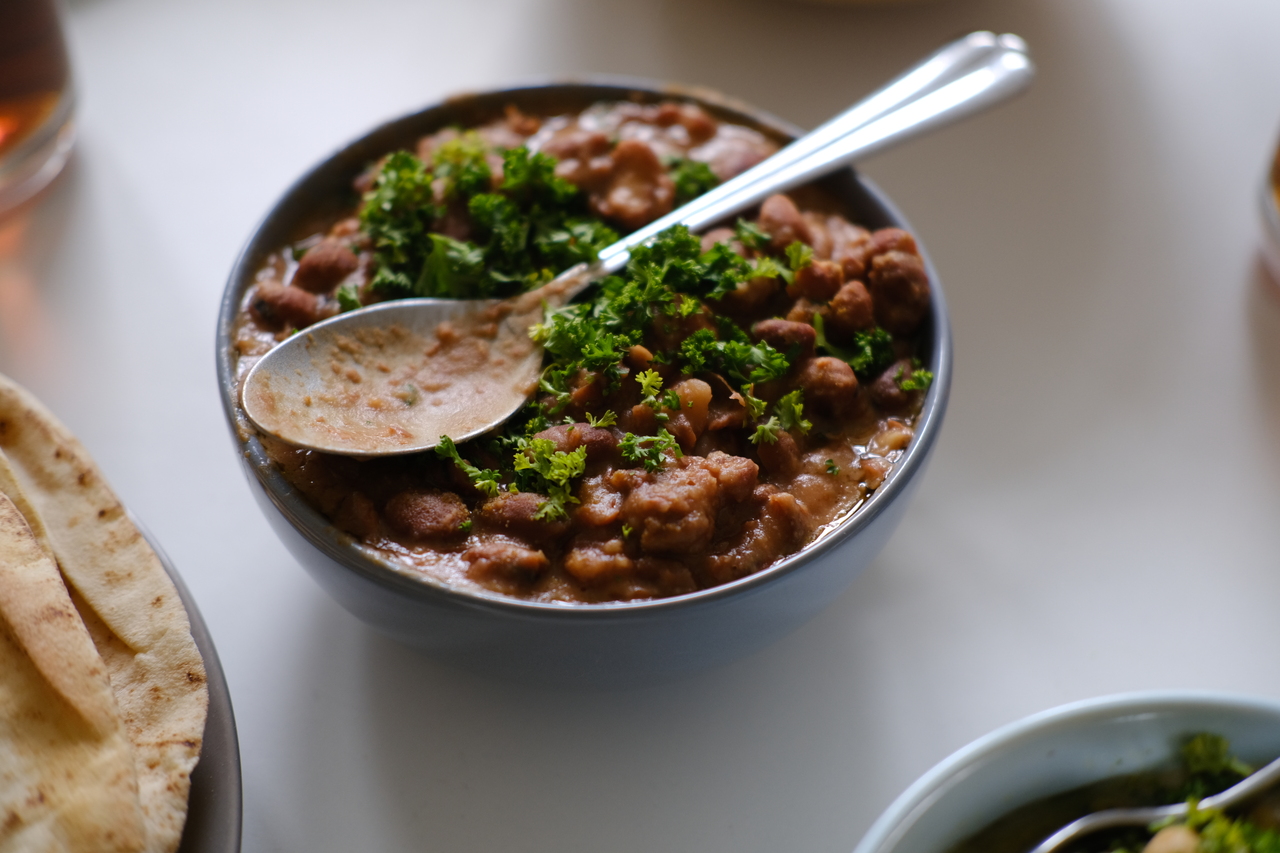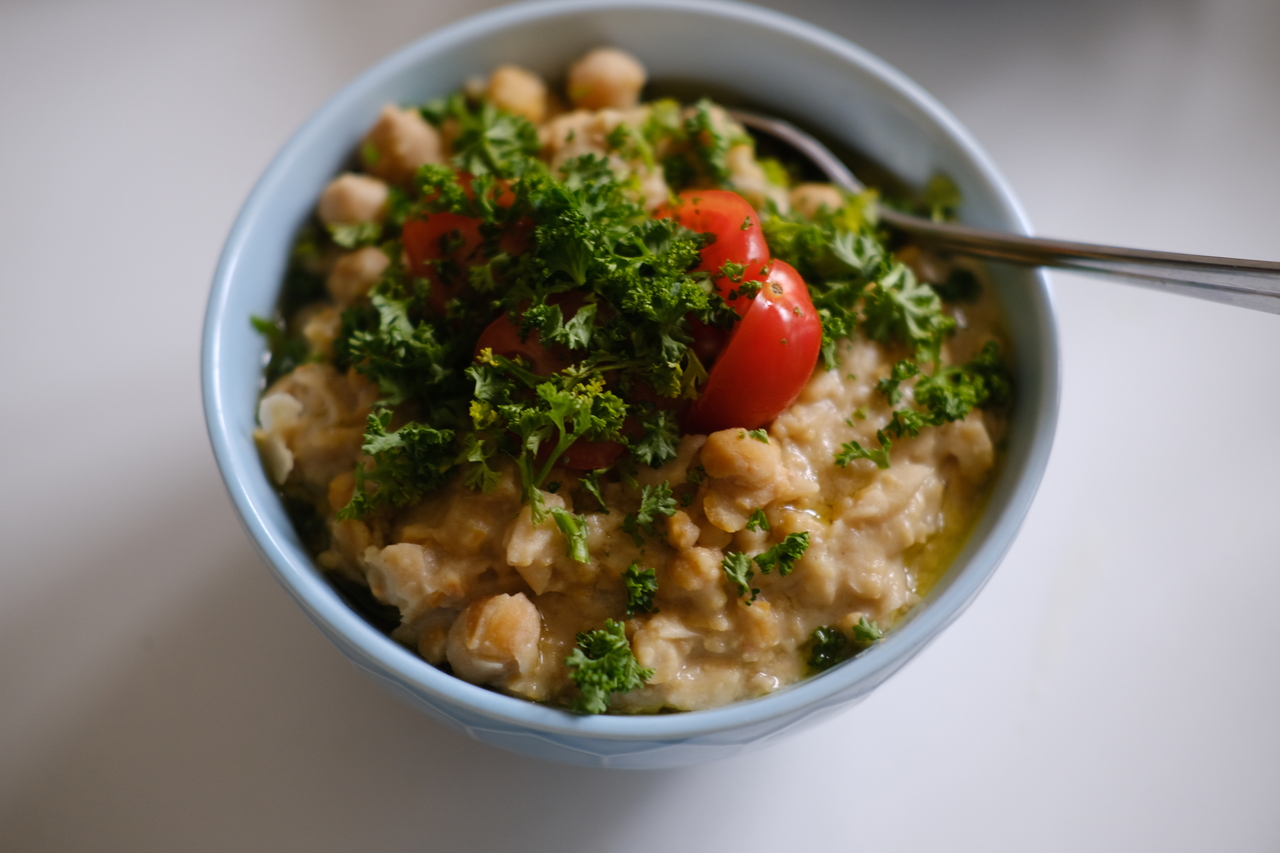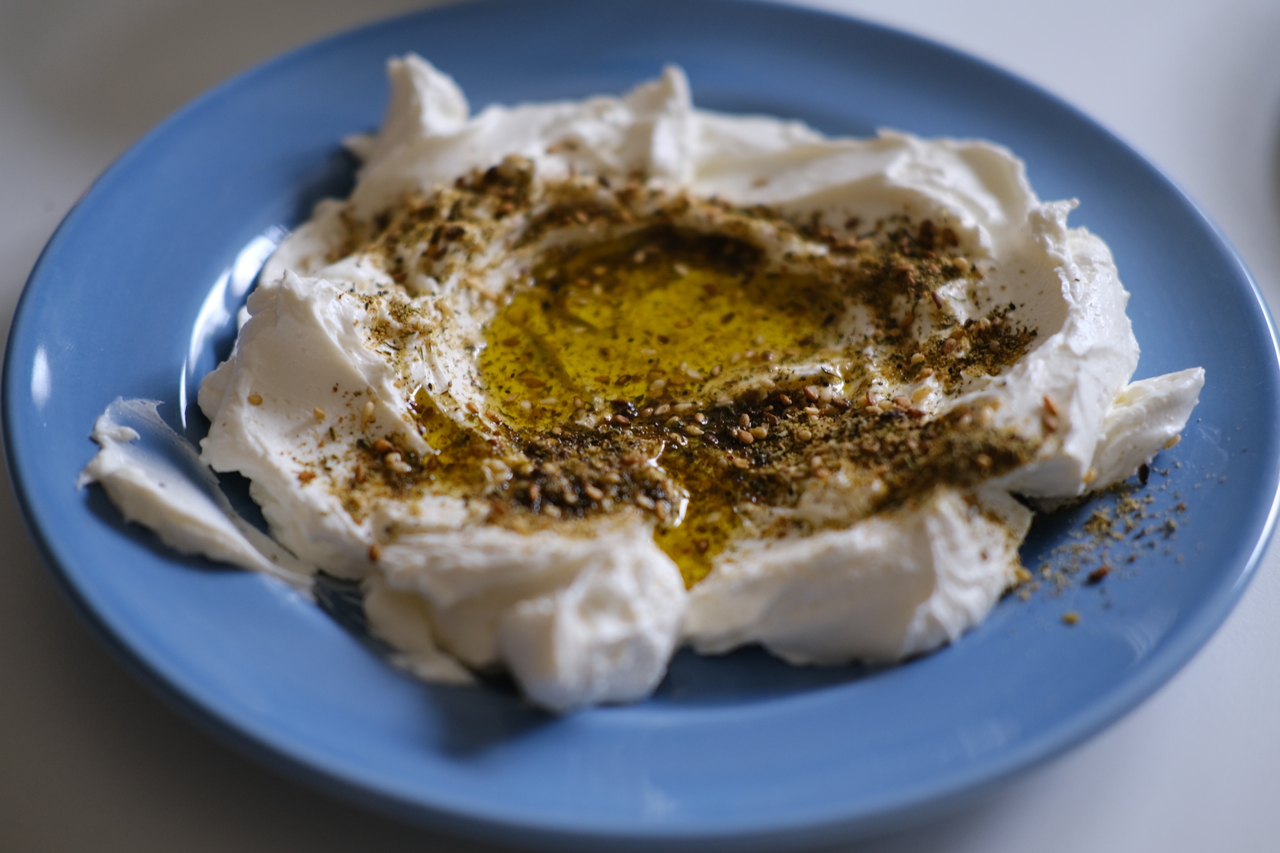I hosted some friends for lunch and I made them some Lebanese food; foul, msabaha, labneh, flatbread, a simple salad, and tea. The menu was inspired by a video from Middle Eats.
On the topic of videos, I saw a really satisfying one some time ago of a Lebanese man preparing food in his breakfast restaurant for its patrons; a great watch.
Lebanon is actually a relatively small country, and its cuisine carries many similarities to Palestinian cuisine. I adore the dishes and produce they use to make their meals; my definition of true comfort food is a good Middle-Eastern meze.
Foul mdamas

Lebanese foul mdamas for my friends, in my apartment in Amsterdam, 2022.
I made a Palestinian variant about a year ago, using both fava beans and chickpeas. This time around, I just used a tin of fava beans on its own. This Lebanese-British woman has some clear instructions.
Heat up the foul in their liquid until you can easily but roughly mash the beans. Mash garlic with salt, mix with lemon juice and cumin. Stir the mixture through the foul, transfer to a pleasing serving bowl and garnish with fresh tomato and parsley. Drown in good olive oil.
Msabaha

Lebanese chickpea dish with a tahini-lemon dressing, in my apartment in Amsterdam, 2022.
Cook chickpeas until they are workably soft. Roughly mash them. In a separate bowl, mix some tahini with lemon juice, cumin, garlic, and salt. Combine everything, transfer to a serving bowl you dare to serve in, pour over some good olive oil, and garnish with tomatoes and parsley.
Labneh

Labneh (strained yogurt) topped with the za'atar spice mix and olive oil, in my apartment in Amsterdam, 2022.
You can make your labneh yourself, like I did for my Iranian mast-o khiar. However, this time I went to a Turkish supermarket in Amsterdam to get some properly pre-made labneh. Much quicker and tastes great too. You can also read a Lebanese woman write about it, if you prefer. In this same article, she mentions makdous, which was new to me. Makdous are cured eggplants with walnuts and peppers, and they appear to be very popular in Lebanon. I should definitely make these in the future.
Anyway, ladle your labneh on a plate and give it an artistic swirl, creating a dip in the middle. This is where we will pour our godly olive oil.
To keep this simple and savory, sprinkle liberally with za'atar. Za'atar is both an herb and a spice mix. The mix often includes sumac and sesame seeds, in addition to other herbs and spices.